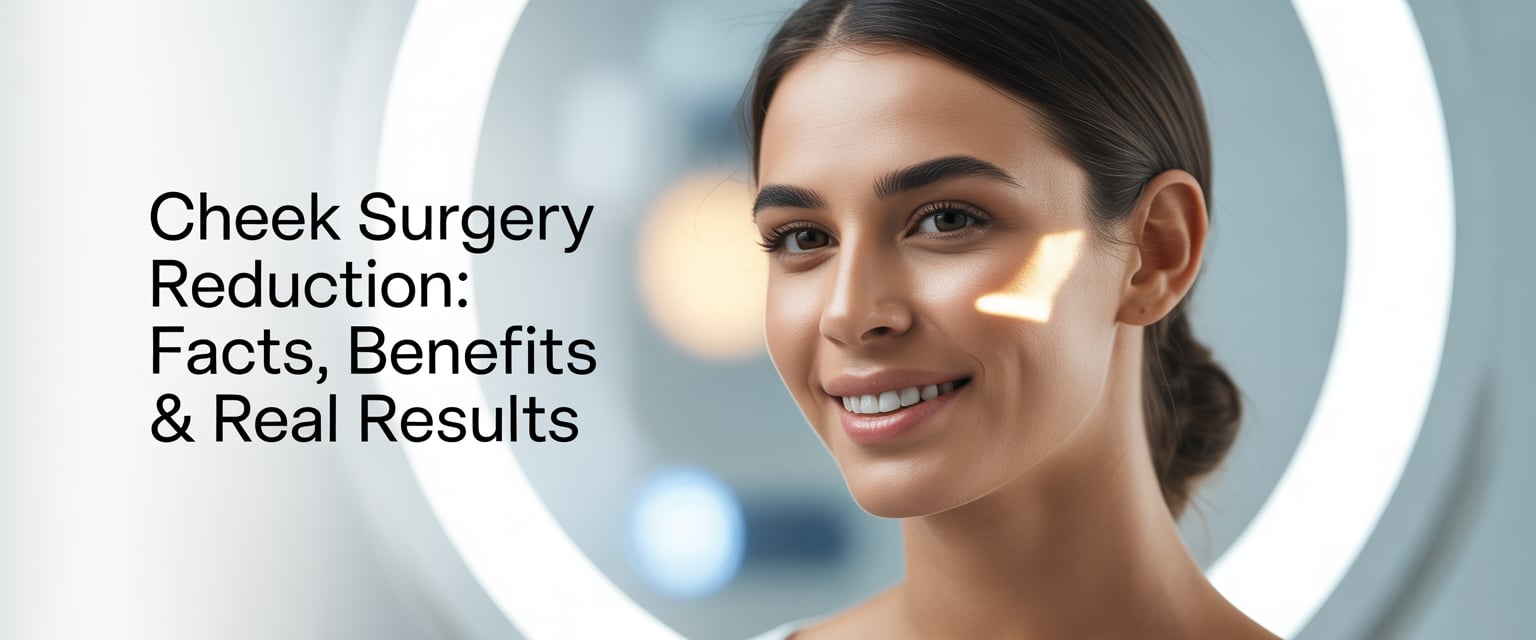In the ever-evolving world of cosmetic enhancement, Cheek Surgery Reduction: Facts, Benefits, and Real Results has become one of the most searched topics in 2025 and 2026. This innovative procedure, also known as buccal fat removal, helps individuals achieve a slimmer and more sculpted facial profile by removing excess fat from the lower cheeks.

Whether you’re aiming for a defined jawline or balanced facial symmetry, Cheek Surgery Reduction: Facts, Benefits, and Real Results offers a safe, effective, and lasting way to enhance natural beauty without altering your unique features.
Cheek Surgery Reduction
Cheek surgery reduction, also known as buccal fat removal, offers a way to achieve a slimmer, more defined facial shape by removing small fat pads from the lower cheeks. This procedure appeals to those who want sharper cheekbones and a more balanced facial contour without major changes to their natural features. It creates a subtle, lasting improvement that enhances facial harmony and confidence.
As interest in facial contouring continues to rise, especially in 2025 and 2026, many people are exploring how cheek reduction surgery can refine their appearance safely and effectively. The procedure, sometimes called cheek reduction surgery, is minimally invasive and performed through small incisions inside the mouth, leaving no visible scars. It’s a personalized approach that depends on facial structure, age, and aesthetic goals.

This guide explains what to expect before and after surgery, the key benefits, and how to decide if it’s the right choice. It also highlights expert insights, cost details, and the growing popularity of this treatment among those seeking natural, balanced results.
7 Facts You Must Know About Cheek Surgery Reduction
Cheek surgery reduction changes the facial structure by removing or reshaping tissue for a slimmer, more defined appearance. It requires careful planning, a skilled plastic surgeon, and awareness of both benefits and risks before deciding on this cosmetic surgery.
What Is Cheek Surgery Reduction?
Cheek surgery reduction, also called buccal fat removal or cheek reduction surgery, is a procedure that reduces fullness in the lower cheeks. It involves removing part of the buccal fat pads—fat deposits located deep inside the cheeks—to create a slimmer and more contoured look.
During the procedure, the surgeon makes small incisions inside the mouth, usually near the upper molars. Because the cuts are internal, there are no visible external scars. Local anesthesia is often used, though some patients may receive general anesthesia.
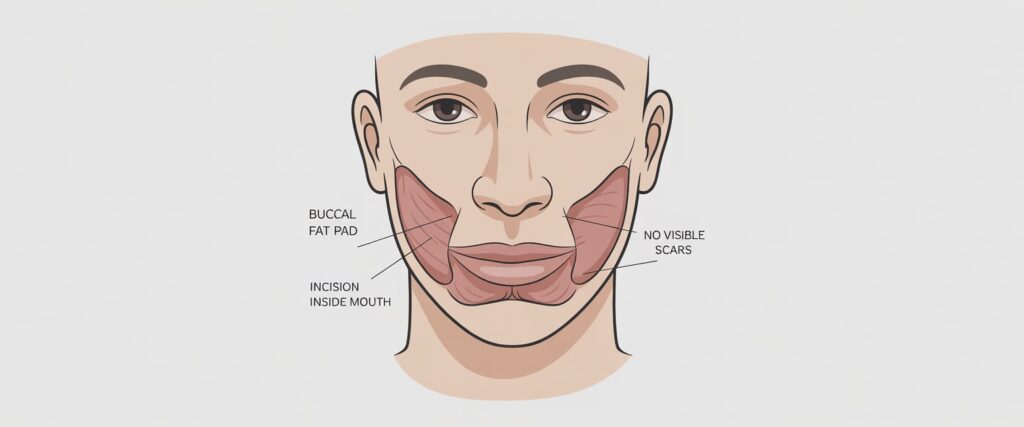
The surgery typically lasts 30–60 minutes and is performed on an outpatient basis. Recovery takes about one to two weeks, with most swelling subsiding within a few days. According to Harvard Health, this type of cosmetic surgery can be done under local anesthesia, making it relatively simple compared to other facial procedures.
Types of Cheek Reduction Procedures
There are two main types of cheek reduction procedures: soft-tissue reduction and bone contouring.
- Buccal Fat Removal: This is the most common type. It removes excess buccal fat pads to slim the lower face. Clinics like Anderson Sobel Cosmetic Surgery describe it as ideal for patients with naturally round cheeks or a “baby face.”
- Cheekbone Reduction (Malarplasty): This involves reshaping or shaving part of the cheekbone to reduce its projection. It is more invasive and often performed in East Asia for a balanced facial profile, as noted by AB Plastic Surgery Korea.
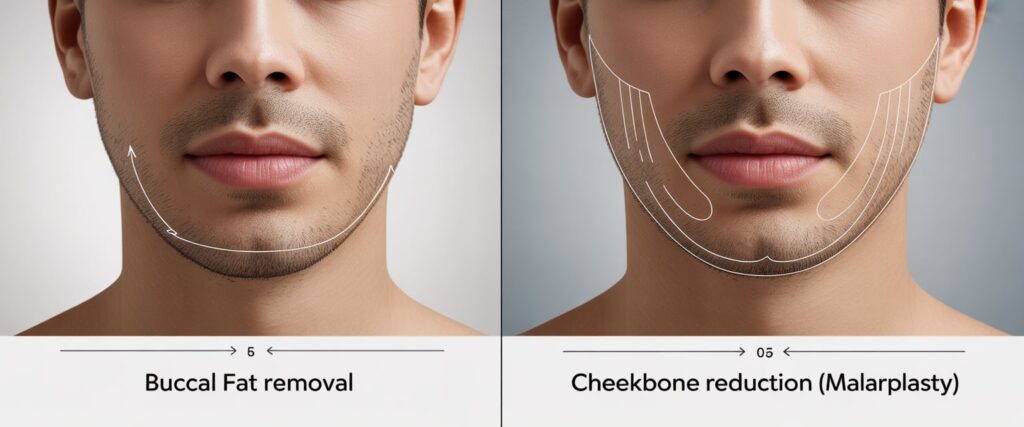
Some patients combine cheek reduction with other procedures like chin augmentation or rhinoplasty to improve overall facial harmony. The choice depends on facial anatomy, aesthetic goals, and surgeon recommendations.
Who Is an Ideal Candidate?
An ideal candidate is someone with full or rounded cheeks that do not change with weight loss. People seeking sharper cheekbones or a slimmer face often benefit the most.
Candidates should be in good health and have realistic expectations. Surgeons usually advise against the procedure for individuals with thin or narrow faces, as fat removal may lead to a hollow or aged appearance over time.
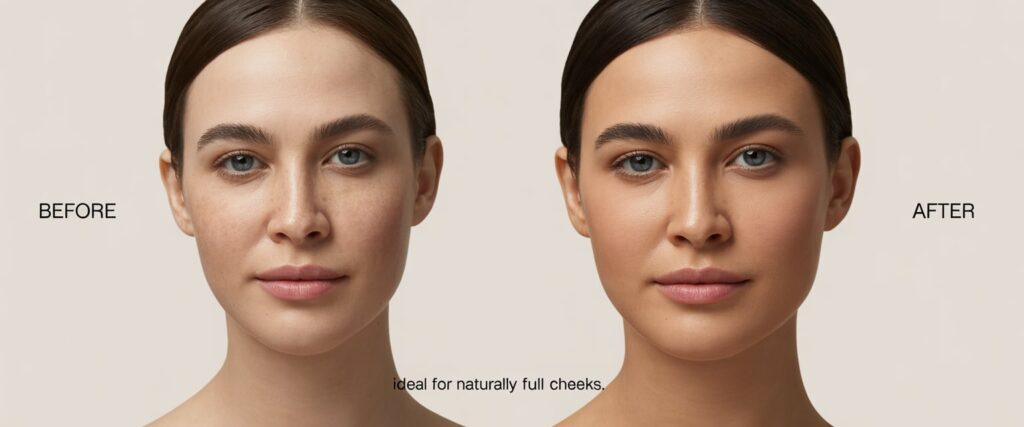
Patients must also avoid smoking and manage any bleeding disorders before surgery. A consultation with a certified plastic surgeon helps determine suitability and ensures that the planned changes match the patient’s natural facial structure.
Potential Risks and Complications
Like all surgical procedures, cheek reduction carries some risks. Common short-term effects include swelling, bruising, and mild pain. These usually resolve within one to two weeks.
Possible complications include:
- Infection at the incision site
- Asymmetry from uneven fat removal
- Nerve injury leading to temporary numbness
- Excessive hollowing if too much fat is removed
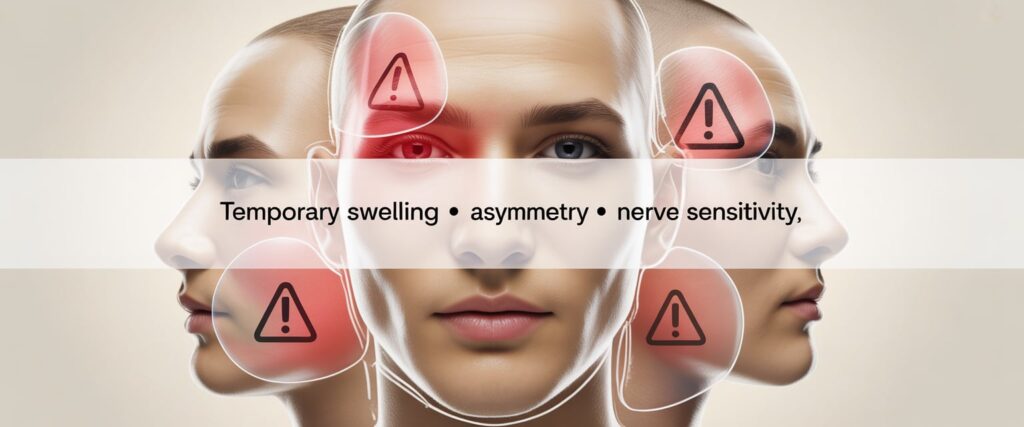
Surgeons stress the importance of moderation. Over-removal of buccal fat can make the face appear sunken as a person ages. Patients should follow post-operative care instructions closely and attend all follow-up visits to ensure proper healing and balanced results.
Cheek Surgery Reduction: The Secret to a Slimmer Face
Cheek surgery reduction refines the mid-face area by removing or reshaping tissue to create a slimmer, more defined appearance. It focuses on balance between the cheeks, jawline, and cheekbones, improving both facial contour and overall symmetry.
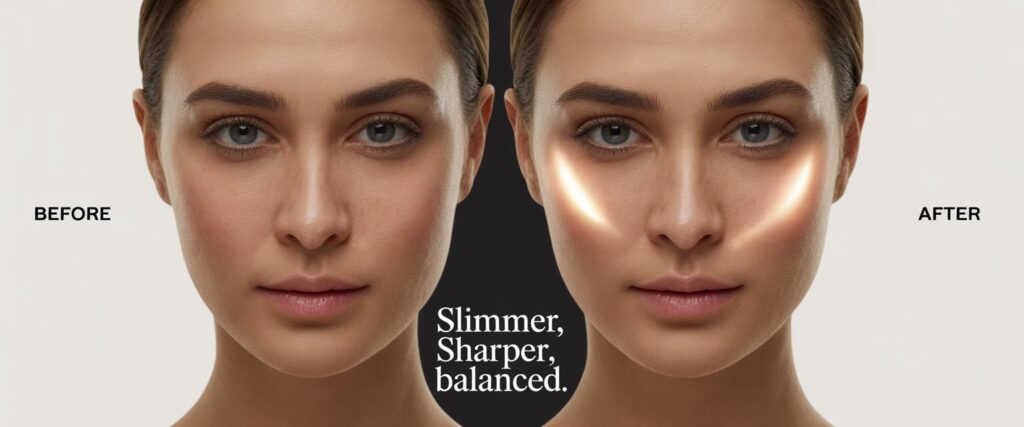
How Cheek Surgery Reduction Enhances Facial Contour
Cheek surgery reduction, also called buccal fat removal, targets the buccal fat pads inside the cheeks. When these pads are naturally large, they can make the face appear round or heavy. By removing a controlled amount of this fat, the surgeon creates a more sculpted lower face.
This procedure can highlight the cheekbones and jawline, giving the face a leaner structure. According to Johns Hopkins Medicine, buccal fat removal narrows the lower cheeks and emphasizes bone definition.
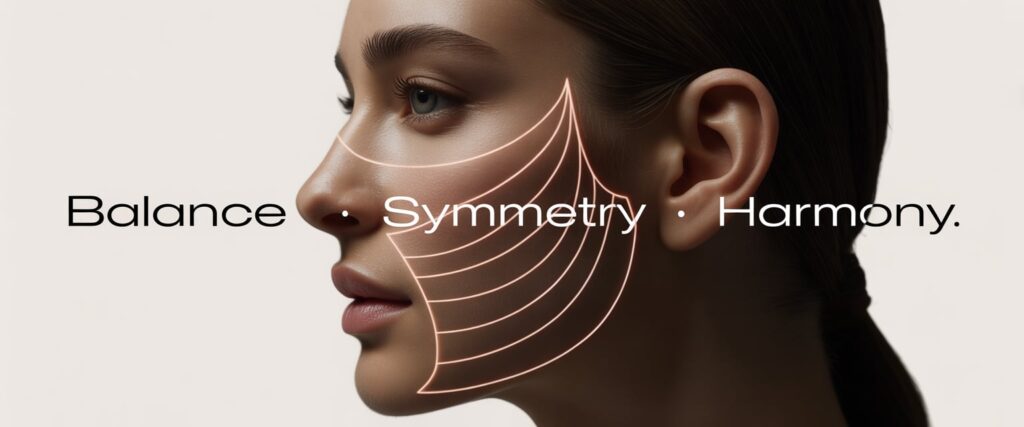
Modern techniques use small incisions inside the mouth, leaving no visible scars. The results are permanent because buccal fat pads do not grow back once removed. Patients often notice a smoother transition between the mid-face and jawline, improving facial contour without fillers.
Facial Harmony and Aesthetics
Facial harmony depends on how features like the cheeks, chin, and eyes relate to one another. Excess cheek volume can disrupt this balance by overshadowing the cheekbones and jawline. Cheek surgery reduction restores proportion by refining the mid-face area.
A well-contoured face typically has gentle definition along the cheeks and a clear outline of the jaw. When buccal fat is reduced, light and shadow fall differently on the face, subtly enhancing facial aesthetics.
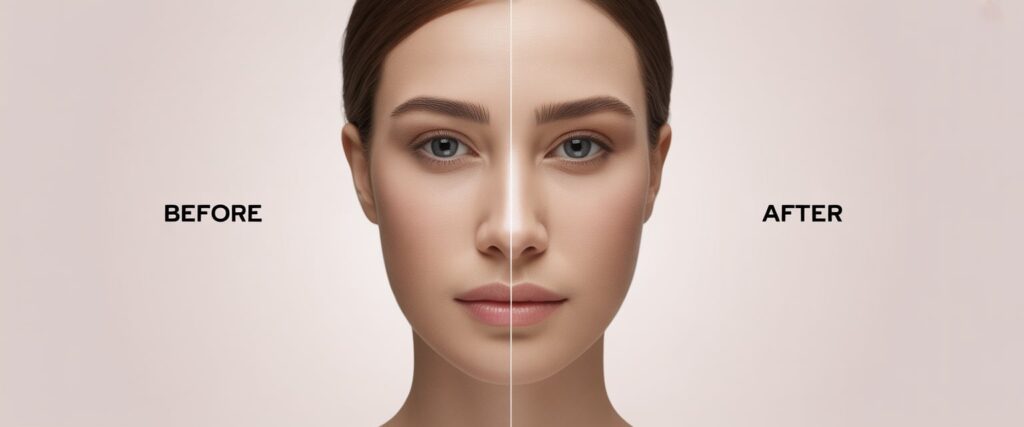
Procedures like this are part of modern facial contouring trends that focus on natural balance rather than dramatic change. Surgeons tailor each case to the individual’s bone structure to maintain a realistic and proportional look.
Buccal Fat and Its Role in Facial Features
Buccal fat is a soft pad located between facial muscles in the lower cheek. It helps shape the face during childhood but can make adult faces appear rounder. Some people have larger buccal fat pads due to genetics or body composition.
During cheek surgery reduction, the surgeon carefully removes part of this fat through small internal incisions. This step reduces fullness while preserving enough tissue for a healthy, natural appearance.
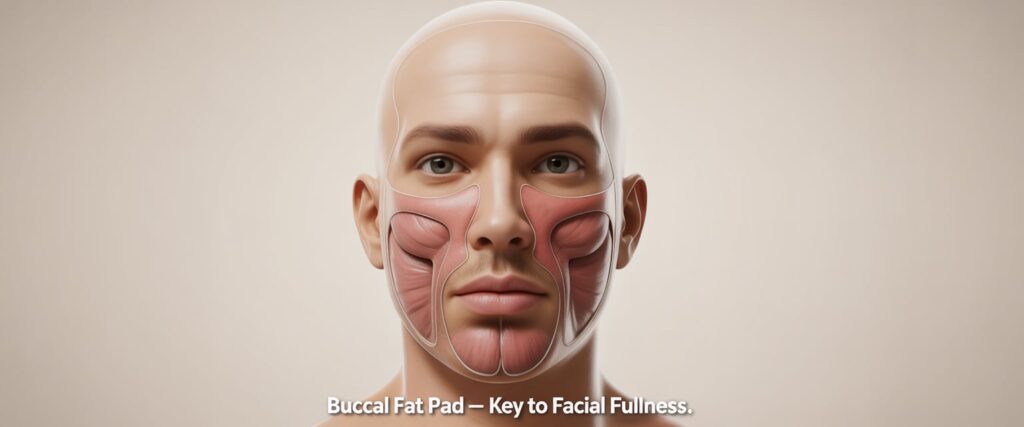
As described in Dr. Mani Arash Rad’s overview, precise fat removal enhances facial symmetry and prevents sagging. The goal is not to hollow the face but to refine its proportions, allowing cheekbones and other features to stand out more clearly.
Top Benefits of Cheek Surgery Reduction in 2025 and 2026
Cheek surgery reduction in 2025 and 2026 focuses on precision, balance, and safety. Modern techniques deliver refined contours that align with each patient’s anatomy, improving both appearance and comfort. These advancements emphasize long-lasting results, better facial proportion, and functional benefits that go beyond cosmetic appeal.

Long-Lasting and Natural Results
Surgeons use AI-assisted fat mapping and minimally invasive tools to target buccal fat with greater accuracy. This approach ensures that only the right amount of tissue is removed, preserving youthful volume while defining facial structure. The outcome appears natural and stable for years.
The procedure typically leaves no visible scars because incisions are made inside the mouth. Patients often see gradual improvements as swelling subsides, with full results visible in about three to six months.
Unlike fillers that require regular maintenance, cheek reduction surgery offers permanent contouring. Clinics such as Beyond Aesthetics and Beauty Trends note that modern techniques reduce the risk of over-removal, which helps maintain a balanced and natural look even as the face ages.
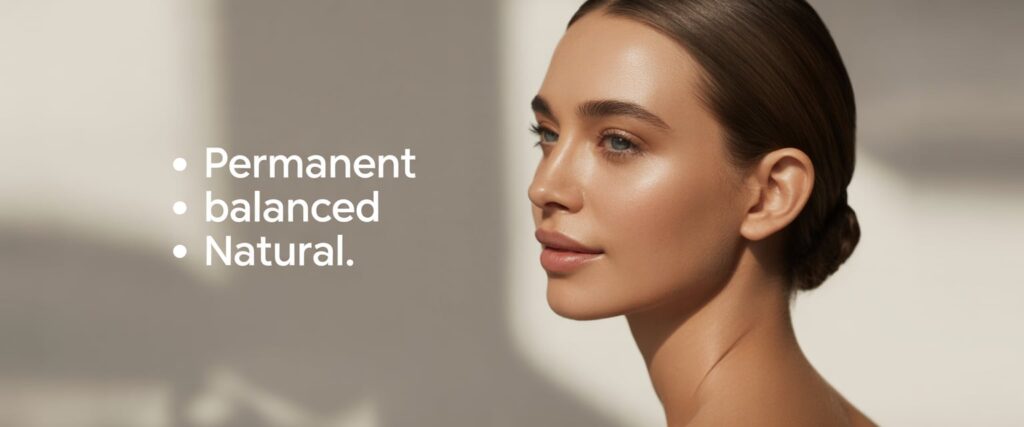
| Feature | Traditional Methods | 2025–2026 Techniques |
|---|---|---|
| Incision Type | External | Inside the mouth |
| Recovery | 2–3 weeks | 1 week |
| Longevity | Temporary | Permanent |
| Appearance | Risk of hollowness | Natural contour |
Improved Facial Balance and Proportion
Cheek reduction surgery enhances facial harmony by aligning the cheeks, chin, and jawline. When combined with chin augmentation or jawline sculpting, it creates a smoother transition between facial features. This balanced proportion helps define the lower face without making it appear hollow or sunken.
By removing excess buccal fat, surgeons can highlight natural bone structure. The result is a slimmer, more proportionate appearance that complements the nose, lips, and eyes.
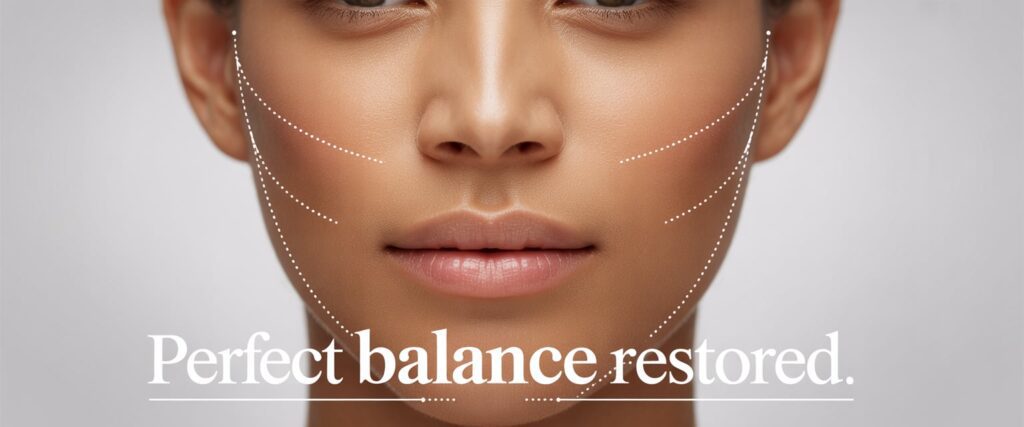
According to Harley Clinic’s overview of cheek reduction benefits, this procedure is ideal for individuals with round or full cheeks who want subtle contouring rather than dramatic change. The improved symmetry can also make facial expressions appear more relaxed and confident.
Functional Advantages Beyond Aesthetics
Cheek surgery reduction can improve jaw alignment and reduce strain on the temporomandibular joint (TMJ). Excess buccal fat sometimes adds pressure to surrounding muscles, leading to tension or discomfort. Removing this volume helps restore natural movement and balance in the lower face.
Patients often report easier chewing and less jaw fatigue after recovery. In some cases, it can also reduce mild asymmetry caused by uneven fat distribution.
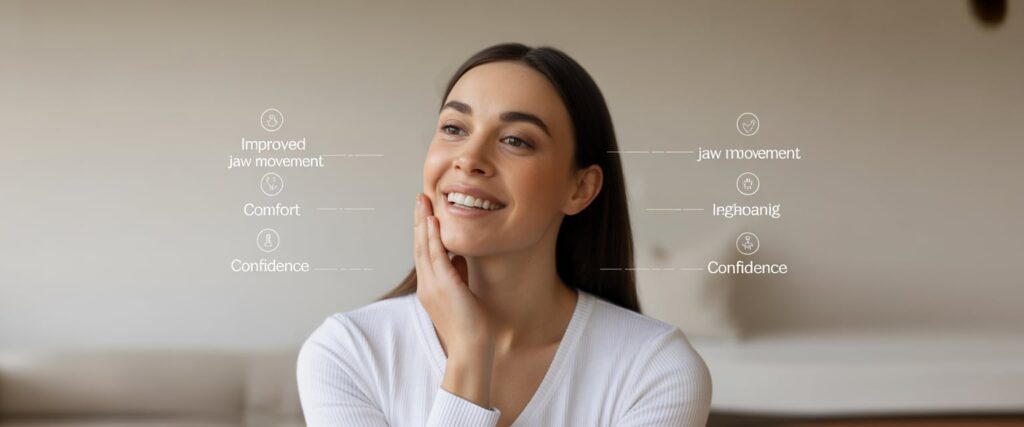
As noted by Health Harvard’s guide on cheek reduction surgery, the procedure’s minimally invasive design shortens recovery and lowers infection risk. These functional improvements make cheek surgery reduction a practical choice for those seeking both aesthetic refinement and comfort.
Is Cheek Surgery Reduction Right for You? Find Out!
Cheek surgery reduction can refine the face by removing or reducing buccal fat pads to create slimmer cheeks. It suits those seeking more defined contours but depends on facial structure, goals, and medical suitability.
Assessing Your Facial Structure and Goals
A person’s facial structure determines whether cheek reduction will achieve balanced results. Those with naturally round or full cheeks may notice the most visible change after surgery. However, individuals with already narrow or angular faces risk appearing overly hollow.
Before deciding, patients should identify their goals. Some want a sculpted look, while others aim to reduce fullness in the lower cheeks. Reviewing before-and-after photos from verified clinics helps set realistic expectations.

The buccal fat removal procedure typically targets the lower cheek area. It’s important to understand that bone structure, skin thickness, and age affect how results will look. A surgeon can evaluate these features to determine if the procedure will complement the rest of the face.
Consulting a Qualified Plastic Surgeon
Choosing a qualified plastic surgeon is critical for safe and effective results. Patients should verify that the surgeon is board-certified and experienced in facial contouring. During consultation, the surgeon will assess the patient’s health, facial anatomy, and expectations.
The discussion should include anesthesia options, such as local or general, and potential risks like swelling or asymmetry. A skilled surgeon will explain both the benefits and limitations of the procedure.

According to Westlake Dermatology, cheek reduction surgery is usually performed under local anesthesia and involves removing part of the buccal fat pad through an incision inside the mouth. This approach minimizes visible scarring and shortens recovery time.
Patients should also ask about recovery care, costs, and follow-up visits. A transparent consultation helps them make informed decisions about whether surgery aligns with their goals.
Alternatives to Cheek Surgery Reduction
Not everyone needs surgical intervention to achieve a slimmer face. Non-surgical options include facial liposuction, injectable treatments, and contouring with dermal fillers. These methods can subtly adjust facial proportions without permanent changes.
The Cosmetic Surgery Today overview explains that facial liposuction can reduce cheek fullness for those with excess fat rather than large buccal pads. It may be suitable for individuals seeking less invasive results.
Lifestyle adjustments—like maintaining a healthy diet and managing weight—can also influence facial appearance. Some people find that natural fat loss improves cheek definition over time.

Each option has distinct benefits and recovery times. A plastic surgeon can help determine whether surgical or non-surgical methods best match the patient’s desired outcome.
Conclusion
In conclusion, Cheek Surgery Reduction: Facts, Benefits, and Real Results highlights how modern facial contouring techniques can transform appearance while maintaining harmony and balance. With advanced technology, minimal downtime, and long-lasting effects, this procedure continues to gain popularity among individuals seeking a naturally refined look. By understanding Cheek Surgery Reduction: Facts, Benefits, and Real Results, patients can make confident, informed choices about enhancing their facial aesthetics and embracing a more sculpted, youthful appearance.
Frequently Asked Questions
Is there a surgery to reduce cheek fat?
Yes. The most common surgery to reduce cheek fat is buccal fat removal, also known as cheek reduction surgery. During this procedure, a small amount of buccal fat — a natural fat pad inside the lower cheeks — is carefully removed through tiny incisions made inside the mouth. The result is a slimmer, more contoured facial appearance with no visible external scars. This minimally invasive surgery is performed under local anesthesia and offers long-lasting results.
Can we remove buccal fat naturally?
No, buccal fat cannot be removed naturally because it’s a deep, structural fat pad located beneath the facial muscles. Unlike surface fat that changes with diet or exercise, buccal fat doesn’t significantly decrease through weight loss. However, maintaining a healthy lifestyle, balanced diet, and facial exercises may help tone facial muscles — giving a slightly slimmer look — but they cannot eliminate buccal fat entirely.
Is cheekbone reduction surgery safe?
Cheekbone reduction surgery, also called malarplasty, is generally safe when performed by an experienced, board-certified plastic surgeon. Like any surgical procedure, it carries some risks such as swelling, numbness, or asymmetry, but these are rare with proper care. Advances in surgical technology and 3D facial mapping have made cheekbone reduction more precise and safer than ever, ensuring natural, balanced results with minimal downtime.
What age do you naturally lose buccal fat?
Most people start to naturally lose buccal fat in their late 20s to early 30s. This gradual fat loss contributes to a more defined and mature facial structure over time. However, genetics and lifestyle play a major role — some individuals retain fuller cheeks longer, while others experience faster fat reduction. This natural change is one reason surgeons advise caution when considering buccal fat removal at a very young age.
What foods cause buccal fat?
Buccal fat isn’t directly caused by food, but certain eating habits can make the face appear puffier. Diets high in salt, sugar, and processed carbohydrates can lead to water retention and facial bloating. Alcohol and fried foods can also cause temporary swelling. To maintain a naturally sculpted look, it’s best to focus on hydration, lean proteins, fresh fruits, and vegetables, which support skin health and reduce inflammation.
